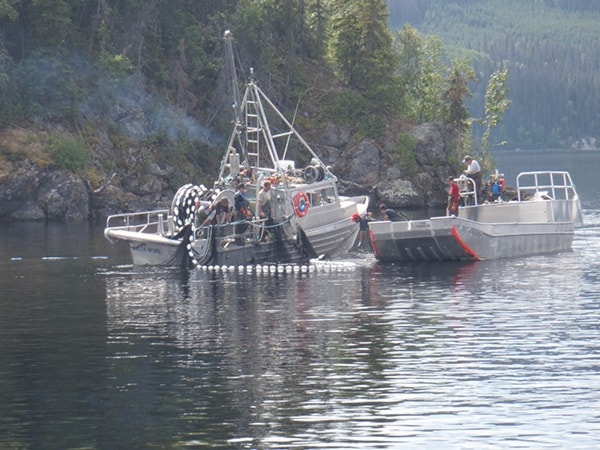The Lake Babine Nation (LBN) sockeye salmon harvest is facing a bad year.
Sockeye return levels in Lake Babine, north of Burns Lake are extremely low. Lake Babine Nation Chief Wilf Adam recently expressed concern over the upcoming harvest season.
“The salmon run will affect us severely as its the low cycle and the numbers so far are very low,” Adam said. “We are monitoring this very carefully and will be meeting with the Department of Fisheries and Oceans very soon about it. It is going to be very different this year with how we will deal with the harvest and food fisheries.”
Two strong seasons in 2011 and 2012 raised hopes that the inland fishery could continue its late season harvest which LBN had been working on since receiving federal funding in 2007 to upgrade facilities and distribution networks.
Historically, the Lake Babine salmon harvest had been strong until it was severely curtailed by the preference given to coastal fisheries in the early 1900s, and the federal government’s insistence, at the time, that traditional methods of commercial fishing were to be suppressed in favour of open-water nets.
This year’s decline will affect all salmon fisheries attached to the Skeena watershed. The reasons for the decline are unknown. According to Greg Knox of Terrace, B.C. based SkeenaWild Conservation Trust, this year’s collapse of salmon runs will hurt commercial and recreational fisheries throughout Northwest B.C.
“B.C. fisheries have been severely curtailed and closed, because the run is looking so dismal, and First Nations along the Skeena River may be restricted in their food fishing,” Knox said.
Exacerbating the problem is the Alaskan pink and chum salmon industry which fails to avoid substantial ‘by-catch’ of sockeye as they return to the Skeena and Babine watersheds to breed.
Up to 20 per cent of all sockeye returning to the Skeena watershed are unintentionally caught in southeast Alaskan commercial fisheries.
“The pressures from Alaska mean that even fewer sockeye will make it back to Babine Lake, where they are needed to fill the spawning channels and wild streams,” Knox explained. “This will mean fewer fish available for harvest by everyone, including LBN in future years.”
According to Knox, the existing Canada/U.S. Pacific Salmon Treaty does nothing to prevent the capture of depleted B.C. salmon species in the Alaskan fishery.
“It is interesting to note,” added Knox, “that the Alaskan State constitution would require Alaska to take action were these to be Alaskan stocks of concern. We hear a lot about how well-managed these Alaskan fisheries are, but when it comes to B.C. salmon swimming through their waters, they’re not walking the talk.”
